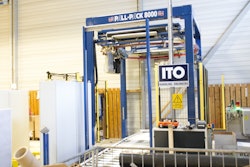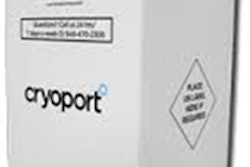Brand owners are enamored of flexible packaging, justified by high consumer acceptance. But if a brand owner were to randomly select a household and wager on a particular type of packaging being found there, an odds-on favorite would be aerosols. Actually, the term “aerosol” refers to the emitted mist, spray, or foam; however, herein, the term will be used to refer to the entire package/product combination.
Foods, pharmaceuticals, medical devices, personal-care, cosmetics, air-treatments, cleaners, polishers, lubricants, paints, insect repellants, and gardening are among the many categories that are marketed as aerosols. The list even can be said to include toys, an example of which is the aerosol that shoots out colored string, popular at children’s parties. The list, in addition to demonstrating the diversity of applications, indicates that consumers use aerosols throughout their households, outdoors (i.e. yards and garages), and away from home.
To perceive something as being “push-button” or “spray-on” is to perceive it as providing ease-of-use convenience, a quality that’s so inherent to aerosols that it’s rarely overtly stated promotionally. The convenience of aim-and-press (a single finger being all that’s required) is intuitively recognized and valued by aerosol users. Ironically, aerosols are victims of that main selling point, in that consumers are less aware of──or at least give less thought to──other benefits provided by aerosols.
Safety is a benefit. Because aerosols are hermetically sealed, breakage, spills, and leaks are of far less concern; furthermore, being hermetically sealed is an effective safeguard against product-tampering. Another safety aspect is avoidance of unwanted contact with body parts, particularly hands: no external mixing makes for clean-hands dispensing.
Control is a benefit. The consumer dispenses as little or as much of the product as desired. Waste is minimized, which has its expression in economy and cost-effectiveness.
Sanitary use is a benefit. Members of a household can share aerosols without concern about previous users. That’s admittedly more important for food products; for example, little sister can use an aerosol of whipped cream to top her dessert, unconcerned that little brother used it earlier (assuming that he resisted the temptation of inserting the nozzle into his mouth and jetting a stream into it). A different example is the sharing of deodorant: the risks associated with cream, stick, and roll-on don’t apply to aerosols.
Despite the wide-spread popularity of aerosols and the resultant familiarity, there’s a “black-box” aspect about them; their outputs are directly observable, but the inner workings that produce those outputs are not. Unlike other types of packaging, one does not open an aerosol to view the contents, and metal cans are not see-through. The label informs consumers, “Contents under pressure,” and consumers intuitively understand the purpose of that condition. That level of understanding suffices for most consumers, not interested in the finer details of aerosols.
A packaging professional, on the other hand, could benefit from a more in-depth understanding. Even if that person currently is not associated with aerosols, future opportunities might change that. From a lighter incentive, why not be prepared for laypersons’ basic questions, whenever and wherever posed?
Aerosols consist of multiple components, external and internal. The external components are the can itself along with a covering cap (whether removable or integrated). Also external is the actuator, which upon being pressed, dispenses the contents through a valve opening (typically, an arrow on top of the actuator points in the direction of the valve opening, designating the direction of the spray). Another external component, although not observable on all types of aerosols, is a valve cup sealing the top of the can.
Internally, there’s a hollow dip tube, similar in appearance and identical in function to the type used in trigger-spray bottles. The dip tube extends from the bottom of the can, through an assembly of components (including a spring essential to the up-and-down movement of the actuator, the spring housing, and a sealing gasket), and eventually up into the actuator. And, there’s the propellant and the product.
Propellant and product reside inside the can either as distinct phases (layers) or intermixed. Either way, aerosols operate under physical laws, specifically that of vaporization, that govern the relationship between pressure and states of matter. Propellant gas is filled into the can under enough pressure to convert the gas into a liquid. When the aerosol is activated, internal pressure forces propellant and product up through the dip tube and through the opening in the actuator. When liquid propellant and product are dispensed into the ambient pressure, the liquid propellant converts back into a gas. As propellant is dispensed, some of the liquid propellant remaining in the can vaporizes into a gas, thereby maintaining internal pressure. The cycle repeats until the can is empty.
Propellant gas dispensed into the air invites concerns about its environmental effects. The aerosol industry (suppliers and users) grappled with such concerns even before the sustainability era. There was a time when aerosols used chlorofluorocarbons (CFCs) as propellant; unfortunately, CFCs were said to deplete the Earth’s ozone layer, which absorbs harmful ultraviolet radiation. In the 1980s, aiming to prevent the ozone layer from becoming the all-gone layer, the U.S. banned CFCs (on a related note, aerosol cans are made of steel or aluminum, both being recyclable).
Today’s propellants list includes butane, propane, and compressed air, unthreatening to the ozone layer but not without their own challenges, whether flammability, susceptibility to inhalation abuse, or maintaining less than constant pressure. The matching between propellant and product demands specialized skills, not only to produce the desired category (i.e. spray, mist, or foam), but also to impart nuances that differentiate within a category.
To state it bluntly, the inherent dangers in the manufacturing of aerosols dictate that it be performed by those who truly know what they are doing. Stemming from that necessity, there is a sizable contract packaging sector that specializes in aerosols, and is even used by some major brand-owners who have their own facilities.
With this article having served as a foundation, an upcoming article will focus on innovations in aerosols.


























